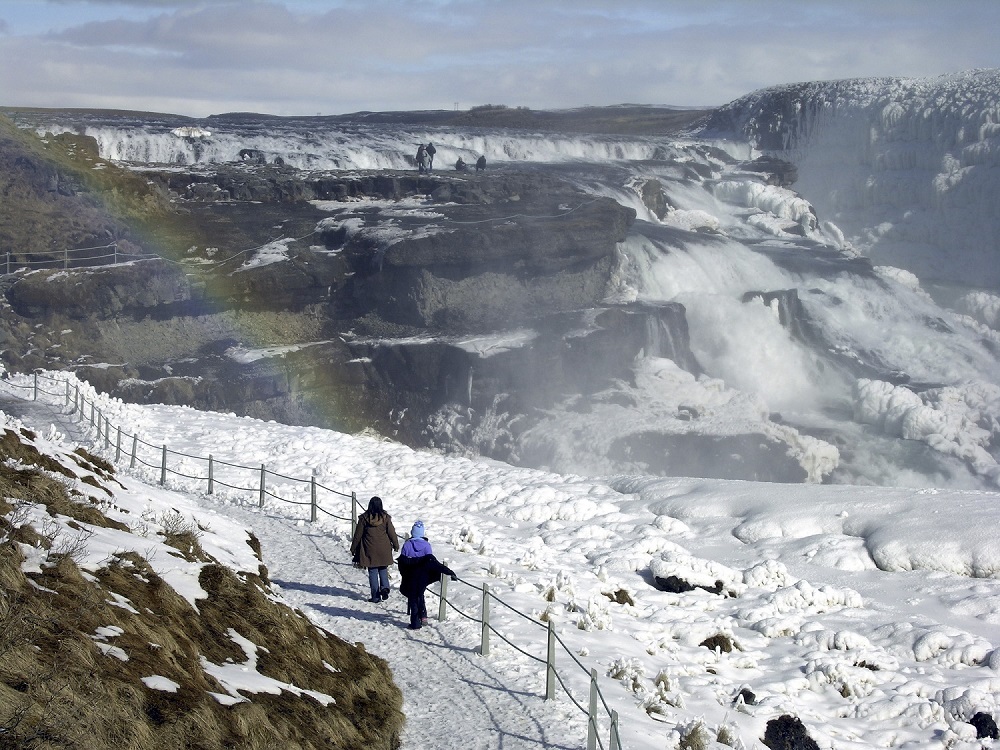Essential Insights for Iceland in Winter
 Essential Insights for Iceland in Winter
Essential Insights for Iceland in Winter Iceland in winter is a destination that defies expectations. Many travelers imagine the country only as a summer wonderland, but the colder months reveal an entirely different side – one of icy waterfalls, dazzling ice caves, and skies illuminated by the Northern Lights. Visiting Iceland during the winter season is not just about sightseeing; it’s about experiencing nature in its rawest and most magical form. Here are the essential insights every traveler should know when planning a journey across the island of fire and ice.
Why Travel to Iceland in Winter?
From November through March, Iceland transforms into a land of striking contrasts. The landscapes may be frozen, but the atmosphere is vibrant and full of life. Here’s what makes winter so appealing:
- Fewer crowds – even the most popular landmarks, like Gullfoss or Þingvellir, feel intimate.
- Unique light – short days bring long golden sunrises and sunsets that bathe mountains and glaciers in soft colors.
- Frozen wonders – waterfalls partly freeze, glaciers reveal hidden caves, and black sand beaches glitter with ice formations.
- Northern Lights – the aurora borealis is visible on clear nights, creating one of the world’s most unforgettable natural shows.
For many travelers, winter in Iceland offers experiences that simply cannot be found during the warmer months.
Top Experiences for Winter Travelers
1. Chase the Northern Lights
The highlight of any winter trip is the chance to see the Northern Lights. While the aurora is never guaranteed, expert guides use weather data and local knowledge to maximize your chances. For a truly personal experience, an exclusive aurora borealis small group tour allows travelers to enjoy the spectacle without the distractions of large crowds. Sharing the moment with just a handful of people makes the shimmering colors above feel even more intimate.
2. Discover the Golden Circle
The Golden Circle is one of Iceland’s most famous routes, covering Þingvellir National Park, the erupting geysers at Haukadalur, and the mighty Gullfoss waterfall. In winter, the scenery transforms dramatically – steaming geysers rise against snowy fields, waterfalls freeze into icy sculptures, and the volcanic landscape feels almost otherworldly.
Joining a complete Iceland winter circle tour allows travelers to see all of these highlights in comfort while learning about Iceland’s history, geology, and folklore from expert guides. The combination of natural wonders and cultural insights makes this one of the most rewarding journeys during the colder months.
3. Explore Glaciers and Ice Caves
Winter is the only season when glacier ice caves are accessible and safe to explore. These shimmering blue caverns inside Vatnajökull Glacier are sculpted by nature and change from year to year, making every visit unique. Stepping into the glowing blue halls feels like entering another world – an experience that has become one of Iceland’s most sought-after winter activities.
Other glacier adventures include snowmobiling across vast white expanses or hiking with crampons to witness crevasses and frozen landscapes up close.
4. Drive Iceland on Your Own
For adventurous souls, a self-drive Iceland winter adventure is the ultimate way to experience the island. Renting a 4x4 vehicle allows you to travel at your own pace, stop at hidden gems, and truly embrace the feeling of freedom on Iceland’s open roads. Winter driving does require preparation – icy roads, sudden storms, and reduced daylight hours – but for confident drivers, it offers unmatched independence.
Tips for self-drive in winter:
- Always check road and weather conditions before departure.
- Stick to main routes like the Ring Road for safety.
- Pack extra layers, snacks, and emergency supplies.
- Allow extra time for each day, as conditions may slow you down.
5. Experience Icelandic Winter Culture
Winter in Iceland is not just about nature. The season also offers insight into local traditions and culture. Towns and villages glow with festive lights in December, geothermal pools offer warmth against the snow, and traditional foods like hearty lamb soup or skyr desserts add comfort to the long nights. The contrast of cozy culture against wild landscapes is part of what makes Iceland so unforgettable in winter.
Practical Iceland Winter Travel Tips
To make the most of your trip, remember these essentials:
- Clothing: Dress in warm layers – thermal base, insulating middle, and waterproof outer shell.
- Daylight hours: In December, expect only 4–5 hours of light. Plan key activities during this time.
- Tours vs. independence: Guided tours are stress-free and safe; self-drive offers flexibility but requires preparation.
- Safety: Weather in Iceland can change rapidly. Always follow local advice and check daily forecasts.
Embrace the Magic of Winter
Exploring Iceland in winter is about more than ticking sights off a list – it is about connecting with a landscape that feels alive, raw, and ever-changing. Whether you choose an exclusive aurora borealis small group tour, set out on a complete Iceland winter circle tour, or embark on a daring self-drive Iceland winter adventure, each path reveals a different side of this extraordinary island.
Winter in Iceland is not a challenge to overcome, but an invitation to witness nature at its most powerful and beautiful. For those willing to embrace the cold and the unknown, the reward is a journey that will remain unforgettable for a lifetime.
